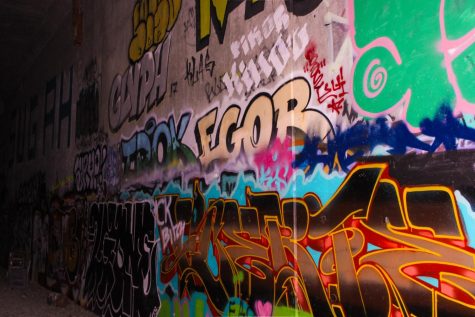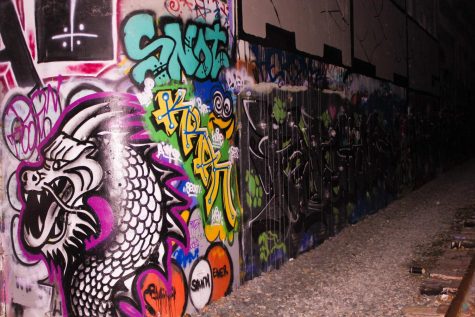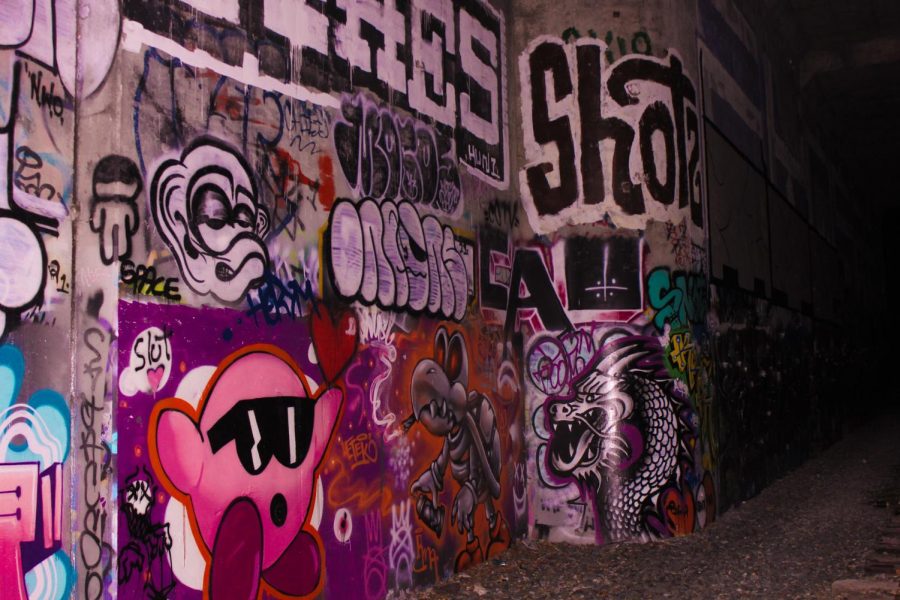Taking a glance at graffiti
Community members share their opinions on the artistic value of graffiti
Graffiti is an abstract art-form that allows artist to express themselves and their emotions.
May 16, 2023
*For the purpose of maintaining their anonymity, we will refer to the MVHS student as Student A.
Over the years, the vibrant and often provocative presence of graffiti has left its mark on the tunnels, bridges and roads of Cupertino. This abstract art form has been a subject of controversy for years, with some viewing it as a destructive act of vandalism while others recognize its value as a tool for social and political commentary.
Graffiti involves the defacing of public or private property, often with the use of spray paint and markers. Under section 594 of the California Penal Code, graffiti is deemed an illegal activity and perpetrators can be penalized with up to three years in state prison. However, to graffiti artist Student A, graffiti is not vandalism, but rather a form of art that allows him to express himself. Growing up in an area surrounded by graffiti, Student A was inspired to start spraying messages to give people “something nice and sweet” to see. Although they describe themselves as new to the graffiti scene, they hope to continue pursuing graffiti as a hobby and upgrade to larger-scale projects in the future.
“If someone spray painted someone [else’s] house, that’d be vandalism,” Student A said. “But if it’s simply just [the artists] tag on a train track or a wall, it’s not. There’s always a point where it goes too far. Abandoned places hidden from society are free game, [but] anything that’s city [or private] property [is off limits].”
In contrast with Student A’s viewpoint, MVHS Alum ‘22 Dominic says graffiti is simultaneously art and vandalism. While they accept that private property being off-limits contributes to the stigma around graffiti, Dominic asserts that graffiti artists should take measures to avoid polluting the environment. They also disparage the use of graffiti to promote hate, both Dominic and Student A agreeing that hateful or not, graffiti should not be punished as a crime.
“I don’t think that punishing anybody for doing [something] wrong is very productive,” Dominic said. “But ultimately, I think that if someone [graffities] hate speech, you can just cover it up. It’s as simple as that. If you punish them, it sets a bad precedent for [punishing] everybody who does graffiti in general.”

While graffiti can be hateful, Student A emphasizes that it is also an effective medium for artists and activists to spread awareness and share their ideas, pointing out how they personally have not seen hateful speech in graffiti as other artists tend to cover it up. Rather, they often see words of encouragement, which motivated them to start using paint markers to leave notes in support of marginalized communities.
Dominic also highlights political messaging as one of the primary purposes of graffiti. A world-renowned anonymous street artist by the name of Banksy gained international recognition for his political commentary using street art. Known for his subversive messages, such as “‘The Girl With The Balloon,” Banksy uses his graffiti as a form of activism to challenge social norms, which Art teacher Brian Chow believes is the whole point — allowing artists to express themselves when they “have no other way to have power over their own community.”
“When I see street art or even graffiti, I see people trying to express themselves outside of the confines of [social norms],” Chow said.
To Chow, the ability of graffiti to express emotion and represent the artist’s narrative is an important aspect that makes it more impactful. He feels that these forms of expression allow individuals to convey their untold personal stories, which is an attribute he teaches in his classes.

“That’s what I’m teaching my students, [that] you have power,” Chow said. “Use it with your creativity. If your story hasn’t been told, [tell it]. Our stories house this whole conversation about graffiti.”
Although Student A says the thrill of breaking the law is one of the appeals of graffiti, they also reflect on the variety of forms that graffiti can take on, from memorials for deceased friends and family members to their own drawings of dogs.
“Graffiti in its simplest form is art,” Student A said. “It’s activism. It’s letting people know that you were here and that you existed. And that’s kind of what I [am] doing. I’m] leaving a footnote for other people to find.”




















